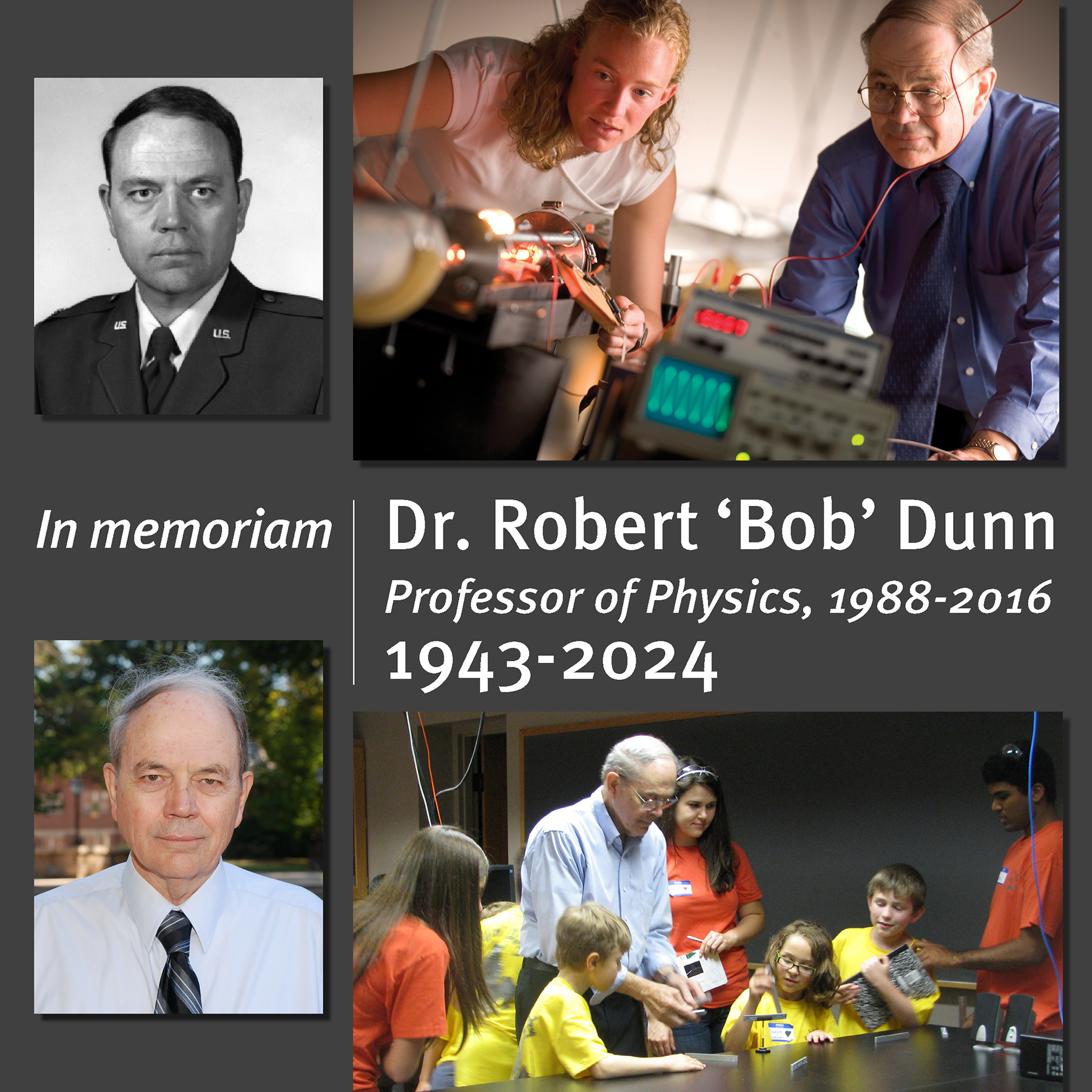Retired
physics professor known for research on earthquakes, hurricanes

CONWAY,
Ark. (September 25, 2024) — The Hendrix community is saddened by the passing of
retired Professor of Physics Dr. Robert “Bob” Dunn, who died on September 22 in Chandler,
Texas. Dunn taught at Hendrix from 1988 to 2016, following a 20-year career in
the United States Air Force that included earning his Master of Science in
Physics from the Air Force Institute of Technology and his Ph.D. in Physics
from the University of New Mexico.
While
at Hendrix, Dunn secured at least four National Science Foundation grants, plus
numerous others from the Arkansas Space Grant Consortium. He was well known for
engaging students in research, particularly in work that focused on using the
College’s ring laser to detect
earthquake and tornadic activity.
“He,
and others in chemistry and physics, were important players in creating a
strong culture of undergraduate research at Hendrix,” said Cynthia Cook
Sandefur Odyssey Associate Professor of Physics Dr. Julie Gunderson ’06. “Bob
really believed that the best way to learn physics was by doing physics, and he
provided many opportunities for Hendrix students to do physics research over
the years.”
Dunn’s
contributions to the strength of the department continue, with 60 percent of
the current Department of Physics having taken classes from Dunn, and another
faculty member receiving word from him about an opening at Hendrix.
“Bob
was the person who let me know that Hendrix was hiring a physicist in 1998, and
he encouraged me to apply,” said Professor of Physics Dr. Ann Wright, who
met Dunn while
she was a post-doctorate researcher at UA Little Rock. “I am grateful that he
did, because I got the job and have been here ever since.”
While
Wright can share stories of Dunn’s adventurous spirit in the lab, her most
frequent memories of him come from his folksy sayings. “‘Nervous as a
long-tailed cat in a room full of rocking chairs’ was my favorite,” she says.
Associate
Provost and Professor of Physics Dr. Todd Tinsley ’98 agrees with Wright about
Dunn’s way of speaking.
“My
favorite was, ‘And if you can do that, I’ll carry your bags to Stockholm.’ I
also loved, ‘I’m afraid you’re traveling down the well-worn road to
mathematical perdition,’” Tinsley said. “The Stockholm line was his clever way
to say, ‘That’s not allowed in physics’ without saying, ‘that’s wrong!’ But
honestly, it was the very first time I ever heard anyone ever suggest, even in
a light-hearted way, science isn’t set in stone. That physicists get surprised
every now and then, and that’ll win somebody a Nobel Prize.”
Tinsley
now uses the Stockholm line in his own classroom, and says he learned more from
Dunn in his years as a colleague than as a student. “Bob had some teaching
experience in K-12 education, and he would freely share lessons he learned
there about the importance of decentering yourself when teaching,” he said. “He
had an example-driven teaching philosophy about how students build knowledge
that was particularly well-suited to students who were novice learners.”
Gunderson,
like Tinsley, attests that learning from Dunn outside the classroom had an
impact on her life: “I knew Bob for many years before I was a student at
Hendrix because we went to the same church,” she said. “At church, Bob was a
beloved Sunday School teacher who knew a lot about the historical context of
the Bible, and I knew him to be very sincere and devout in his Christian faith.
“So,
from the Hendrix motto perspective, Bob lived a full and well-rounded life: He
was a Christian, husband, father, grandfather, teacher, and mentor.”
A
visitation will be held Friday, September 27. Read the full obituary here.